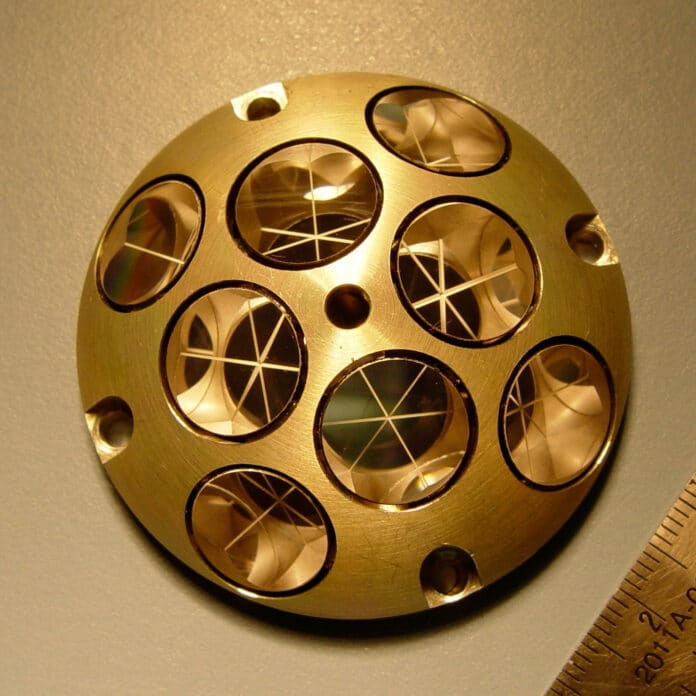For the first time on the Moon, a laser beam was transmitted and reflected between an orbiting NASA spacecraft and an Oreo-sized device on ISRO’s Vikram lander, marking a significant milestone in lunar exploration. The successful experiment opens the door to locating targets on the Moon’s surface with greater precision.
The experiment took place on Dec. 12, 2023, at 3 p.m. EST, when NASA’s LRO (Lunar Reconnaissance Orbiter) pointed its laser altimeter instrument toward Vikram. The lander was located near Manzinus crater in the Moon’s South Pole region, about 62 miles (100 kilometers) away from LRO, near Manzinus crater in the Moon’s South Pole region. After the orbiter registered light that had bounced back from a tiny NASA retroreflector aboard Vikram, NASA scientists knew their technique had finally worked.
Sending laser pulses toward an object and measuring how long it takes the light to bounce back is a commonly used way to track the locations of Earth-orbiting satellites from the ground. But this technique can also be used in reverse – to send laser pulses from a moving spacecraft to a stationary one to determine its precise location.
“We’ve shown that we can locate our retroreflector on the surface from the Moon’s orbit,” said Xiaoli Sun, who led the team at NASA’s Goddard Space Flight Center in Greenbelt, Maryland, that developed the retroreflector on Vikram as part of a partnership between NASA and ISRO. “The next step is to improve the technique so that it can become routine for missions that want to use these retroreflectors in the future.”
Only 2 inches, or 5 centimeters wide, NASA’s tiny but mighty retroreflector, called a Laser Retroreflector Array, has eight quartz-corner-cube prisms set into an aluminum frame. Even though it’s small, it’s simple, durable, and can last for decades without any power or maintenance. The retroreflector can reflect light from any direction back to its source because of its unique configuration.
Retroreflectors have various applications in science and exploration. They have been used on the Moon since the Apollo era and reflect light back to Earth. By doing so, they have revealed that the Moon is moving away from our planet at a rate of 1.5 inches (3.8 centimeters) per year.
The new generation of smaller retroreflectors has even more applications than the larger ones. For instance, they are used as precision markers on the International Space Station to aid cargo-delivery spacecraft in docking autonomously.
Retroreflectors could be used in the future to guide astronauts during missions to the Moon’s surface, especially in the dark. They could also be used to mark the locations of spacecraft already on the surface, which would help future missions land in close proximity to them.
Unfortunately, some obstacles remain to overcome before retroreflectors can be fully utilized on the Moon. The main challenge is that the Lunar Reconnaissance Orbiter (LRO) is currently the only spacecraft with a laser instrument in orbit around the Moon, and the instrument (known as LOLA) was not designed to target a location precisely. Rather, LOLA has been primarily used to map the Moon’s topography in preparation for future missions.
“We would like LOLA to point to this Oreo-sized target and hit it every time, which is hard,” said Daniel Cremons, a NASA Goddard scientist who works with Sun. It took the altimeter eight tries to contact Vikram’s retroreflector.
LOLA dispatches five laser beams toward the Moon to measure the elevation in different areas. The laser beams cover an area of 32 feet, or 10 meters, from a 62-mile, or 100-kilometer, altitude. While it is a great tool for detecting craters, rocks, and boulders to create global elevation maps of the Moon, it may not be ideal for pointing to within one-hundredth of a degree of a retroreflector.
A future laser that continuously rakes the surface without any gaps in coverage would help retroreflectors meet their potential. Nevertheless, NASA’s miniature retroreflectors continue to use LRO’s laser altimeter to help refine the position of targets on the surface, especially landers.
